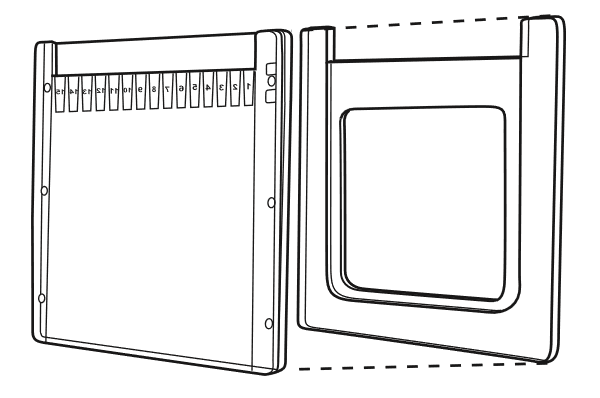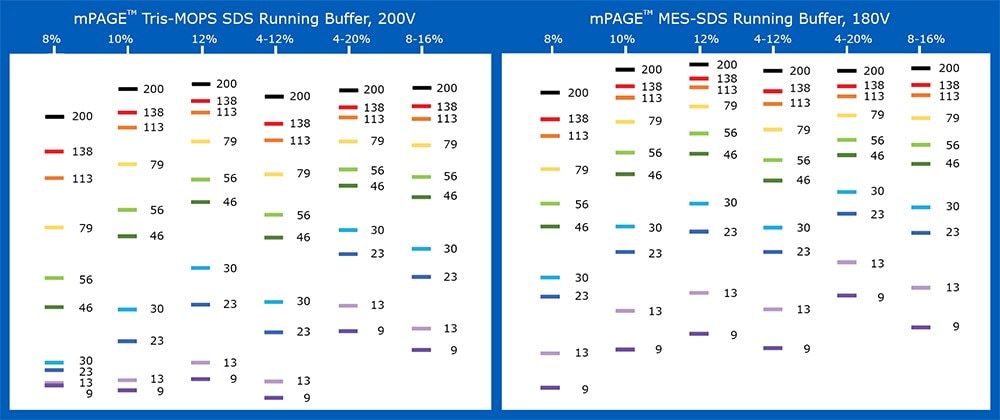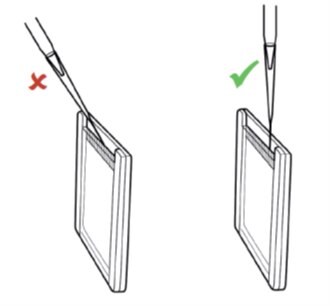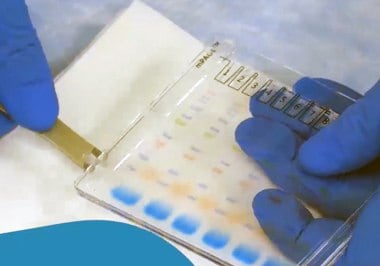How to Run an mPAGE™ Protein Gel Using an Invitrogen XCell Surelock® Mini-Cell Electrophoresis System
- Prepare running buffer
- Prepare protein gel
- Assemble electrophoresis chamber
- Prepare and load samples
- Run gel
- Remove gel from cassette
Tips and FAQs
- Assembling an Invitrogen (Thermo) XCell I, XCell II, or XCell Surelock™ Mini-Cell Electrophoresis Chamber for mPAGE™ Gels
- Selecting MES vs. MOPS Running Buffer for Protein Gel Electrophoresis
- Sample Preparation and Loading
- How to Run the Gel
- Removing the Protein Gel
Assembling an Invitrogen (Thermo) XCell I, XCell II, or XCell Surelock™ Mini-Cell Electrophoresis Chamber for mPAGE™ Gels
XCell mini-cells are compatible with mPAGE™ gels with the use of mPAGE™ Adapter Plates. Use one Adapter Plate per gel. Position the Adapter Plate against the tall plate of the gel cassette before assembling gel tank (Figure 1).

Figure 1.Use of an mPAGE™ Adapter Plate with an mPAGE™ gel for protein electrophoresis.
Selecting MES vs. MOPS Running Buffer for Protein Gel Electrophoresis
There are two buffers that can be used as running buffers for SDS-PAGE gels: MES and MOPS. MES has a lower pKa than MOPS, which enables the gel to run faster. MES buffer gives better separation of proteins at lower molecular weights, while MOPS buffer provides better separation at higher molecular weights (Figure 2).
- Use MES running buffer to resolve small molecular weight proteins
- Use MOPS running buffer to resolve medium and high molecular weight proteins

Figure 2.Selection of MES (left image) vs. MOPS (right image) running buffer for mPAGE™ protein gel electrophoresis, based on protein size and percent acrylamide gel. Protein size for corresponding bands indicated in kDa. Smaller proteins are resolved more efficiently with MES running buffer; larger proteins are resolved more efficiently with MOPS running buffer.
Sample Preparation and Loading
- Prepare samples just prior to electrophoresis as indicated in Table 1.
- Heat samples for 10 minutes at 70 °C (do not boil samples). Centrifuge samples briefly prior to loading.
- To load the samples into the wells, vertically insert the pipette tip for optimal sample loading results (Figure 3). Do not exceed well capacity when loading samples: 80 μL for 10-well gels; 60 μL for 12-well gels; and 40 μL for 15-well gels.

Figure 3.Improper and proper pipette angle for loading samples into mPAGE™ pre-cast gels.
How to Run the Gel
- Once the samples are loaded and buffer chambers are filled, place the cover onto the electrophoresis tank and plug the electrical leads into the power supply.
- Run the gel at constant voltage until the dye front reaches 2 mm from the bottom of the gel cassette. Run time can vary depending on the gel percentage, running buffer, and equipment used. Refer to Table 2 for optimal voltage and typical run times best suited for the chosen gel and running buffer. When running more than one gel per electrophoresis tank, all gels should be of the same composition.

Figure 4.Use the mPAGE™ Gel Cassette Opener as a lever to remove gel plates.
- Hold the gel cassette horizontally and gently lift off top plate.
- Slowly peel the gel from bottom plate and place in buffer or distilled water in preparation for staining or blotting.
Materials for Running an mPAGE™ Protein Gel
如要继续阅读,请登录或创建帐户。
暂无帐户?